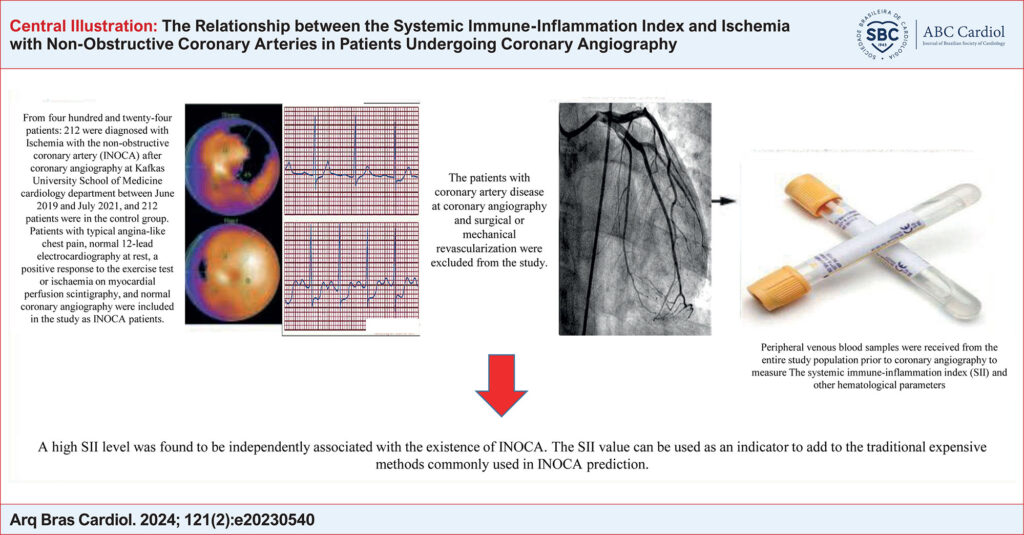Arq. Bras. Cardiol. 2024; 121(2): e20230540
The Relationship between the Systemic Immune-Inflammation Index and Ischemia with Non-Obstructive Coronary Arteries in Patients Undergoing Coronary Angiography
This Original Article is referred by the Short Editorial "Index of Systemic Immunoinflammation and Ischemia in Patients with Non-Obstructive Coronary Arteries".
Abstract
Background:
Ischemia with the non-obstructive coronary artery (INOCA) is an ischemic heart disease that mostly includes coronary microvascular dysfunction and/or epicardial coronary vasospasm due to underlying coronary vascular dysfunction and can be seen more commonly in female patients. The systemic immune-inflammation index (SII, platelet × neutrophil/lymphocyte ratio) is a new marker that predicts adverse clinical outcomes in coronary artery disease (CAD).
Objective:
This study aims to investigate the relationship between INOCA and SII, a new marker associated with inflammation.
Methods:
A total of 424 patients (212 patients with INOCA and 212 normal controls) were included in the study. Peripheral venous blood samples were received from the entire study population prior to coronary angiography to measure SII and other hematological parameters. In our study, the value of p<0.05’ was considered statistically significant.
Results:
The optimal cut-off value of SII for predicting INOCA was 153.8 with a sensitivity of 44.8% and a specificity of 78.77% (Area under the curve [AUC]: 0.651 [95% CI: 0.603–0.696, p=0.0265]). Their ROC curves were compared to assess whether SII had an additional predictive value over components. The AUC value of SII was found to be significantly higher than that of lymphocyte (AUC: 0.607 [95% CI: 0.559–0.654, p = 0.0273]), neutrophil (AUC: 0.559 [95%CI: 0.511–0.607, p=0.028]) and platelet (AUC: 0.590 [95% CI: 0.541–0.637, p = 0.0276]) in INOCA patients.
Conclusions:
A high SII level was found to be independently associated with the existence of INOCA. The SII value can be used as an indicator to add to the traditional expensive methods commonly used in INOCA prediction.
Keywords: Coronary Angiography; Coronary Artery Disease; Ischemia
895

